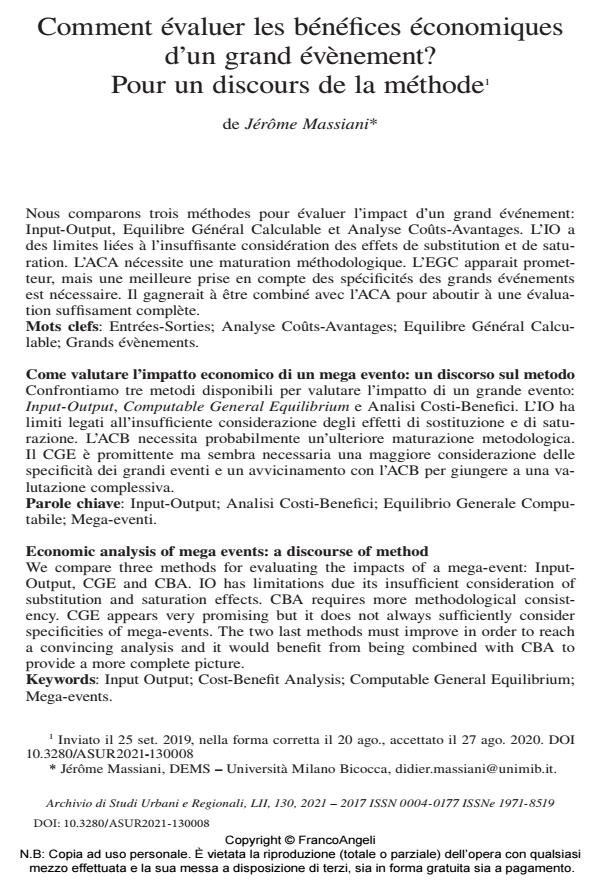Economic analysis of mega events: a discourse of method
Journal title ARCHIVIO DI STUDI URBANI E REGIONALI
Author/s Jérôme Massiani
Publishing Year 2021 Issue 2021/130
Language French Pages 23 P. 140-162 File size 5820 KB
DOI 10.3280/ASUR2021-130008
DOI is like a bar code for intellectual property: to have more infomation
click here
Below, you can see the article first page
If you want to buy this article in PDF format, you can do it, following the instructions to buy download credits

FrancoAngeli is member of Publishers International Linking Association, Inc (PILA), a not-for-profit association which run the CrossRef service enabling links to and from online scholarly content.
We compare three methods for evaluating the impacts of a mega-event: Input-Output, CGE and CBA. IO has limitations due its insufficient consideration of substitution and saturation effects. CBA requires more methodological consistency. CGE appears very promising but it does not always sufficiently consider specificities of mega-events. The two last methods must improve in order to reach a convincing analysis and it would benefit from being combined with CBA to provide a more complete picture.
Confrontiamo tre metodi disponibili per valutare l’impatto di un grande evento: Input-Output, Computable General Equilibrium e Analisi Costi-Benefici. L’IO ha limiti legati all’insufficiente considerazione degli effetti di sostituzione e di saturazione. L’ACB necessi-ta probabilmente un’ulteriore maturazione metodologica. Il CGE è promittente ma sembra necessaria una maggiore considerazione delle specificità dei grandi eventi e un avvicina-mento con l’ACB per giungere a una valutazione complessiva.
Keywords: Input Output; Cost-Benefit Analysis; Computable General Equilibrium; Mega-events.
- Computable General Equilibrium assessment of mega-events: Issues and possible solutions Jérôme MASSIANI, in Journal of Policy Modeling /2022 pp.920
DOI: 10.1016/j.jpolmod.2022.09.015
Jérôme Massiani, Comment évaluer les bénéfices économiques d’un grand évènement? Pour un discours de la méthode in "ARCHIVIO DI STUDI URBANI E REGIONALI" 130/2021, pp 140-162, DOI: 10.3280/ASUR2021-130008